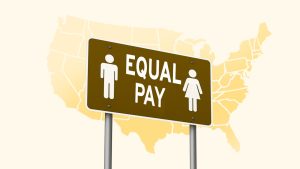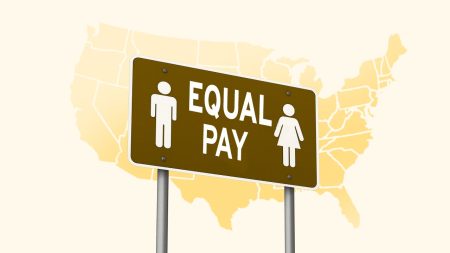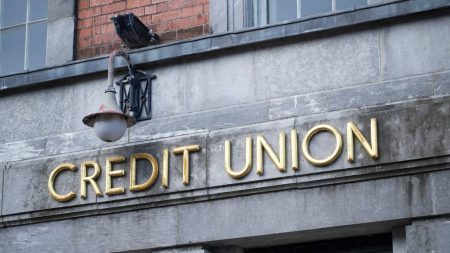Key takeaways
- You may be eligible for a bad credit personal loan with a score below 580.
- Personal loan lenders specializing in bad credit loans will likely scrutinize your income and employment history more closely.
- Bad credit personal loans usually come with higher APRs and shorter terms, so budget for a higher payment.
Getting a personal loan with bad credit may require you to take extra steps to prove you can repay it, but it’s not impossible. Lenders consider a low credit score to be a sign that you may be at a higher risk of defaulting on the loan. Because of the perceived higher risk, bad credit loan interest rates and fees can be higher, and loan amounts may be lower than what consumers with good credit can borrow.
Understanding common approval requirements and comparing lenders are crucial steps to getting a bad credit personal loan.
How to get a loan with bad credit in 6 steps
Most lenders consider a bad credit score anything below 580. However, others may offer their highest rates to borrowers with scores below 670, so make sure you check the lender’s requirements. Whether consolidating high-interest debt or funding an emergency cost, knowing what you need to get a personal loan will help you prepare for the process.
1. Conduct a financial wellness check
Before borrowing a bad credit loan, review your finances to ensure a loan is the best option. Adjusting your budget or picking up a side hustle could help you pay bills without taking on new debt. While a bad credit loan may help you consolidate debts and improve your credit score, you may also want to seek credit counseling to help you build better money habits and avoid future financial trouble.
2. Check your credit score, income and other debts
Your credit score is the most important factor a lender considers when determining your personal loan rate. Personal loan rates typically range between 6 and 36 percent. However, the lower your credit score, the more likely you’ll be offered a rate above 30 percent.
If you haven’t checked your score lately, check with your credit card company or bank — it may offer a free look at one or all three of your credit scores. If they’re lower than expected, visit AnnualCreditReport.com to request your free credit reports.
Bad credit lenders pay extra attention to whether your income is sufficient to cover personal loan payments. They will also measure the percentage of your monthly income used to pay debts. This is called your debt-to-income (DTI) ratio, and the maximum varies from lender to lender.
If a lender advertises approval for DTI ratios of up to 50 percent, read the fine print. That maximum may only apply to borrowers with higher credit scores, which means you must have a lower DTI ratio to offset your low credit score. Alternatively, the lender may offer you a lower loan amount if your DTI ratio is above its limit when you apply.
Bankrate tip
To be approved with bad credit, you’ll likely need to verify that you earn consistent income from a salaried or full-time hourly job. Variable income from self-employment, commissions or tips may not be acceptable to a bad credit lender.
3. Compare bad credit lenders
The terms for bad credit loans may vary widely between lenders. You should apply to at least three lenders and compare their rates and fees to get the best idea of what’s available. If you have a relationship with a community bank or credit union, see if it offers any rate discounts or fee reductions for existing customers — you may have an easier time qualifying with a lender you already have a financial relationship with.
Online personal loan lenders typically offer the most options for bad credit borrowers. Some companies use more lenient criteria than traditional banks for approval, such as your job and education history. When you’re comparing lenders, check each one’s website or ask for information about:
- Minimum credit scores: The minimum may be as low as 500 or as high as 670, depending on the lender.
- Loan amount ranges: Some lenders offer competitive options for smaller loan amounts below $2,500. While several personal loan lenders offer loan amounts as high as $100,000, bad credit lenders tend to limit you to $50,000 or less.
- Repayment terms: Bad credit loan terms usually range between one and five years. A longer term will yield the lowest possible payment, but keep in mind that you’ll pay more in interest over the life of a long loan.
Bankrate tip
The monthly payment on a bad credit personal loan may be much higher than expected, especially if you’re used to making minimum payments on your credit cards. Use a personal loan calculator to determine whether the monthly payment fits your budget.
4. Get prequalified
Prequalifying allows you to gauge your eligibility odds and estimated rates without impacting your credit score. It’s a free tool offered by most lenders, and it can give you an idea of the rates you can expect based on your credit history. Prequalify with at least three lenders to narrow your search.
The best personal loans for bad credit in 2025
If your credit score has sustained some damage, consider Bankrate’s picks for the best personal loans with bad credit.
Learn more
This process should only involve a soft credit pull, which doesn’t affect your credit score. But if you decide to formally apply with the lender, a hard credit inquiry will be generated that could ding your score by a few points.
If you can’t get prequalified for the amount you need, check to see if the lender allows you to add a cosigner or co-borrower to improve your eligibility. A cosigner is usually a creditworthy friend or family member who agrees to take equal responsibility for the loan but doesn’t have access to the funds.
Bankrate tip
In general, personal loans only require a few financial documents for approval. However, you may need to provide extra paperwork to get approved for a personal loan with bad credit. This may include W-2s, tax returns and bank statements showing where your paychecks are deposited.
5. Be prepared for a hard credit check
When you choose the lender you want to borrow from, you’ll officially apply for a personal loan. At this point, the lender will perform a hard credit check. A hard pull will knock down your credit score a few points, but the impact is usually temporary and easily offset by making timely loan payments.
Too many hard checks in a short time can cause longer-term damage to your credit score. Lenders can interpret this as a potential risk, as it may look like you’re applying for multiple loans or products you can’t afford.
If you need to undergo multiple hard credit inquiries, do so within a 45-day window to minimize credit damage. According to the latest FICO scoring model, if you apply for the same product multiple times within a 45-day rate-shopping period, the multiple hard checks will only register as a single inquiry on your credit report.
6. Get your loan funds
Once you’ve provided your paperwork, the lender will review your full application. If you’re approved and agree to the loan terms, the lender may fund your loan as soon as the same business day, though some lenders may take as long as a week. Funds are generally deposited directly into your bank account. If you choose a debt consolidation loan, some lenders will use the loan funds to repay your creditors on your behalf.
Most lenders offer an autopay option that withdraws your monthly payment from your bank account on the due date. Not only can this help you avoid missing a due date, but you may receive a rate discount for enrolling in autopay.
Tips for improving your chances of getting a loan with bad credit
Getting approved for a personal loan with bad credit can be difficult, but there are ways to increase your odds. Some take longer than others, but all are worth considering.
- Apply with a cosigner or co-borrower.
- Opt for a smaller loan amount.
- Consider secured options that require collateral.
- Pay down your debt before applying.
- Take steps to improve your credit score.
- Shop around until you find the right lender.
Pros and cons of bad credit loans
Bad credit loans may be appealing if traditional lenders turn you away and you need cash for an emergency expense, necessary home improvement project or big purchase. But it’s important to consider the advantages and disadvantages of this type of loan before moving forward.
Pros
- More flexible lending guidelines: A bad credit loan has lower credit requirements, and the lender may consider alternative criteria when making a lending decision.
- Could help you improve your credit: If you make on-time payments, a bad credit loan could help you boost your credit over time.
- Less risky than credit cards or payday loans: Bad credit loan rates can be as high as 36 percent. While the average credit card rate is closer to 20 percent, credit card interest compounds daily, adding up more quickly than a personal loan’s simple interest.
Cons
- High fees and interest rates: Lenders tend to charge bad-credit borrowers higher APRs and fees. For example, you may pay an origination fee, which can be as high as 12 percent of your loan amount.
- Collateral requirements: Some bad credit loans require collateral to approve you for the funds. Secured loans offer more affordable rates than traditional unsecured personal loans since the risk to the lender is reduced. But if you default on your loan, the lender could seize your asset and sell it to repay your debt.
- Increased predatory potential: It’s common for predatory products like payday loans to be advertised as bad credit loans. The primary difference between a legitimate and a predatory product is the interest rate — up to 36 percent versus 400 percent or more, respectively.
What to consider before getting a loan with bad credit
A personal loan for bad credit may be a great tool to simplify your finances and improve your credit scores over time. That said, you should weigh the drawbacks of adding a fixed monthly payment to your budget before you make a final decision.
You’ll pay higher interest rates
The unfortunate reality of applying for a loan with a low credit score is that you’ll pay more in interest than you would with a higher credit score. However, the rates may be lower than you pay on maxed-out credit cards. Most bad credit loans can be used to pay off credit card balances, positively impacting your credit scores.
Paying off revolving credit card debt directly affects your credit utilization ratio, which measures how much of your available credit you’re using. You could see a significant increase in your credit scores, which could allow you to replace a bad credit loan at a high rate with a good credit loan rate.
Loan costs are more expensive
You may pay origination fees as high as 12 percent of your loan amount. These fees typically come out of your loan funds before you receive them, meaning you have less cash for debt consolidation, home improvement or emergency costs.
Watch out for predatory lenders that ask you to pay upfront fees for approval. All fees should be deducted from your loan proceeds. Run away from a company that pressures you to pay advance fees for any bad credit loan.
Your loan amount may be lower
Lenders that offer personal loans for bad credit borrowers usually cap amounts at $50,000. The amount may be significantly lower if you have a very low credit score — anything below 580 — or a high DTI ratio.
Terms are generally shorter
A low credit score tells lenders that you may have had difficulty managing your credit in the past. As a result, you may have to a commit to a shorter repayment term — three to five years, versus the six or seven year terms offered to good- or excellent-credit borrowers.
The good news is that if your credit score improves over time, you can refinance your personal loan to a longer term and use the savings to pay your loan balance off faster.
Alternatives to bad credit personal loans
There are a number of alternatives to choose from if a bad credit personal loan isn’t the right fit for you. These are three common options, but taking out a HELOC or borrowing money from friends and family could also meet your needs.
- Credit cards: Although they have high (and variable) interest rates, credit cards can be a useful tool if you manage payments responsibly. Not only will on-time payments improve your credit score, but you’ll have flexible access to funds as you need them. Always aim to pay off your balance each month, and avoid maxing out the credit line.
- Peer-to-peer loans: This is type of personal loan is funded by a group of private or business investors, rather than a direct lender. They may be easier to qualify for than traditional loans — but they often come with higher fees and the application and funding timeline can be longer.
- BNPL loans: A buy-now, pay-later (BNPL) loan lets you split a large purchase into a few smaller chunks. They are typically offered by online retailers for bigger purchases, and many don’t require a credit check.
Bottom line
Having bad credit doesn’t mean you aren’t able to get a personal loan. However, be prepared for higher interest rates, more fees and bigger monthly payments.
Compare lenders to see which will offer you the best deal. While you may not qualify for the most competitive rates, you can still see what options will fit your budget.
Frequently asked questions about bad credit loans
Read the full article here









